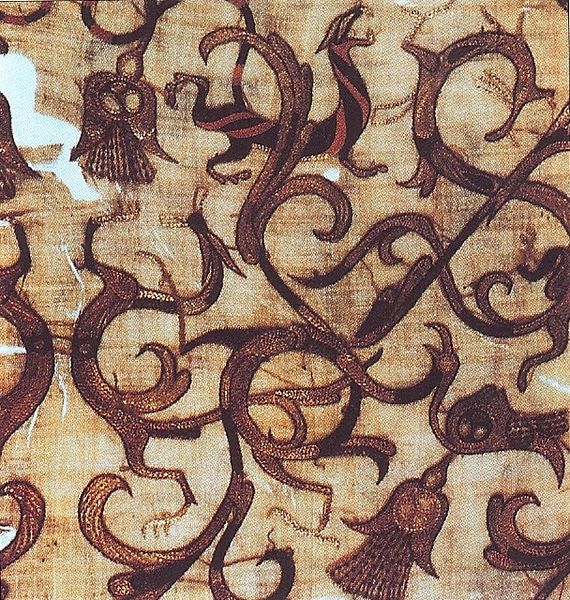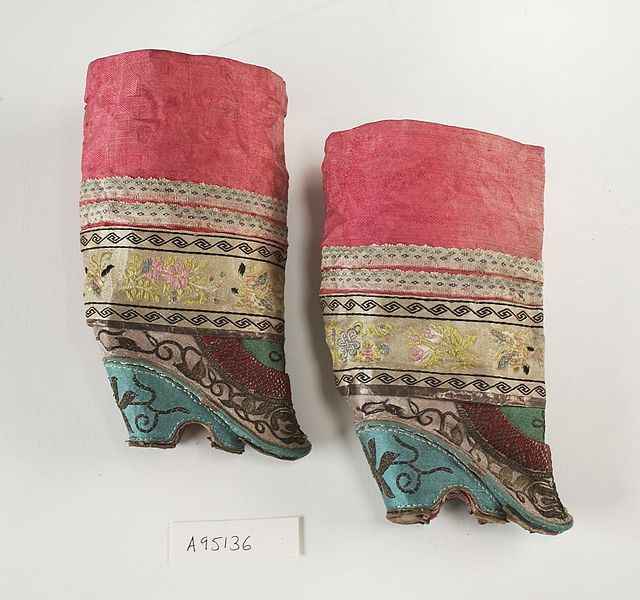The Bayeux Tapestry is an embroidered cloth nearly 70 metres long and 50 centimetres tall that depicts the events leading up to the Norman Conquest of England in 1066, led by William, Duke of Normandy challenging Harold II, King of England, and culminating in the Battle of Hastings. It is thought to date to the 11th century, within a few years of the battle. Now widely accepted to have been made in England perhaps as a gift for William, it tells the story from the point of view of the conquering Normans and for centuries has been preserved in Normandy.
Bishop Odo of Bayeux
Montfaucon / Benoît drawing showing King Harold's death
Stothard / Basire engravings: scenes showing the Norman troops crossing the Channel and landing in Sussex
Detail of stem stitching and laid work.
Embroidery is the art of decorating fabric or other materials using a needle to stitch thread or yarn. Embroidery may also incorporate other materials such as pearls, beads, quills, and sequins. In modern days, embroidery is usually seen on hats, clothing, blankets, and handbags. Embroidery is available in a wide variety of thread or yarn colour. It is often used to personalize gifts or clothing items.
Embroidery sampler by Alice Maywood, 1826
Laid threads, a surface technique in wool on linen. The Bayeux Tapestry, 11th century
Detail of embroidered silk gauze ritual garment. Rows of even, round chain stitch used for outline and color. 4th century BC, Zhou tomb at Mashan, Hubei, China.
A pair of Chinese shoes for bound 'lily' feet








